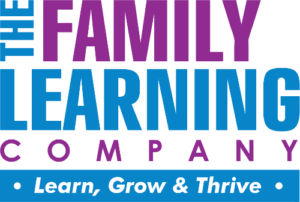Why Our Family Learning Software Works

Interactive Family Literacy software has an extensive research basis in third-party research on the methods it employs. In fact, we designed the product based on this extensive research. All of the research is available on our web site (with citations by clicking the Research tab), and some of it is summarized below (without citations). The key findings include: (1) family learning is effective in improve reading, (2) learner control can improve the results of online learning, (3) formative assessment supports family engagement, (4) limited use of animations increases adult literacy, and (5) vocabulary development is one way to reduce illiteracy.
Family Learning
Human beings are social learners. In a meta-analysis of studies investigating instructional practices that enhanced motivation for, and engagement in, reading, Guthrie and Humenick identified “opportunities to collaborate with other students in discussion and assignment groups to achieve their learning goals.” In her seminal three year study of learning in families, Denny Taylor concluded that children are motivated to learn to read to participate in their family unit, not to access knowledge in the wider world.
Family learning is an approach to intergenerational learning. It acknowledges the family and its culture as the foundation of learning for the child. Family literacy recognizes the parent as the child's first teacher. According to Ruth Nickse’s early descriptions of family literacy programs, intergenerational and family programs retain adult students longer, enhancing adult outcomes. And parental literacy predicts the literacy achievement of their children.
Click here to see a more detailed explanation of the research on family learning.Learner control
In general, the large amount of research on the subject of student agency shows that “the degree to which students learn how to control their own learning … is highly related to outcomes.” Furthermore, for computer-aided instruction, “when the student is in ‘control’ over his or her learning … then the effects were greater than when the teacher was in ‘control’ over these dimensions of learning.” Students who feel that they are in control of their learning are more highly motivated to do the often difficult work of acquiring a new skill like reading. Studies by Kanevsky & Keighley on student engagement show that, “Five interdependent features … distinguished boring from learning experiences: control, choice, challenge, complexity and caring teachers. The extent to which these five C's were present determined the extent of students’ engagement and productivity.”
Click here to see a more detailed explanation of the research on family learning.
Formative Assessment
According to John Hattie, “the most powerful single moderator that enhances achievement is feedback.” In their review of 196 studies describing nearly 7,000 effects on learning, Hattie and Timperley reported that formative feedback had an average effect size of 0.79 – an effect greater than student prior cognitive ability, socioeconomic background, and reduced class size.
Limited use of Animations
Humans are natural learners. The brain secretes Dopamine in its reward centers in response to a successful learning experience demonstrated by performance. First graders successfully reading new words and golfers who learn to hit straighter down the fairway both experience real pleasure from their achievements. They do not need animated figures to congratulate them, rapid-fire editing to keep them involved or good scores to tell them they succeeded. Performing a learned skill generates pleasure by itself. Even more important to learning, the gamification of learning activities actually reduces learning; reducing the value and the pleasure that learners receive from their use. Research by Michelle Donnelly (2) found that students who heard stories read out loud were 2.5 times more likely to remember their content than students who experienced them in animated interactive applications.
Click here to see a more detailed explanation of the research on family learning.
Vocabulary Development
According to Baumann, Kame‘enui, & Ash, students' vocabulary knowledge correlates strongly to their reading comprehension and overall academic success. Robert Marzano’s research has shown that direct vocabulary instruction on words related to content that will be on a test increases performance on that test from the 50th percentile to the 83rd. However, Horst, Cobb & Meara found that a minimum of 8-12 exposures must occur for retention with normal students of any new concept or word. Although teaching can make a real difference in vocabulary learning, the explicit teaching of vocabulary is not enough: a dedicated teacher can only teach perhaps 300-400 words per year. The solution to providing enough exposures to new words to master a complete academic vocabulary is comprehensive, well-designed software.
Click here to see a more detailed explanation of the research on family learning.